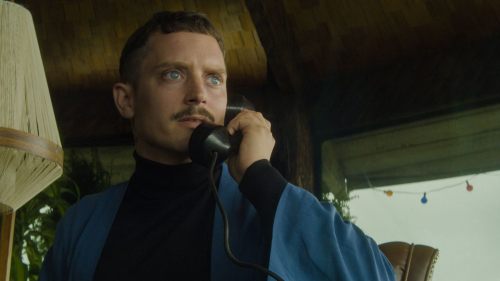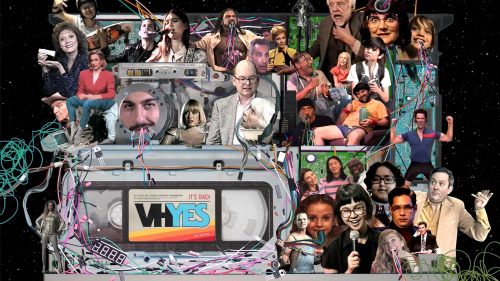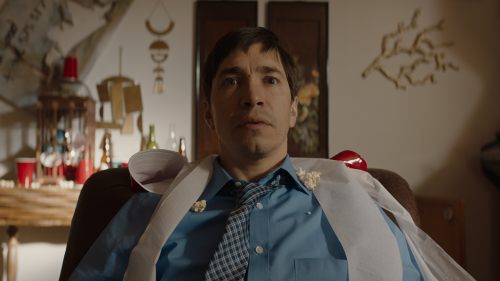Fantastic Fest Review: THE MAN WHO KILLED DON QUIXOTE Has Delusions Of Grandeur
The Man Who Killed Don Quixote is Terry Gilliam’s best movie since before he originally started trying to make this film in the middle ’90s. That’s not entirely a compliment.
Gilliam’s films have been plagued by misfortune since the first aborted attempt to film Don Quixote. Rather than wiping the slate clean, the filmmaker has always returned to the story of two men who slip between eras and identities, rewriting as he went. This version, which opening titles describe as “more than 25 years in the making… and unmaking” is a messy meta-narrative about filmmaking and the cruelty of creativity, with flashes of compelling inspiration and game-for-anything performances from Adam Driver and Jonathan Pryce.
Driver plays Toby, a hack doing everything he can to fail at directing a big-budget commercial in Spain. He berates and hits on his crew. When his exec producer has to leave town for a meeting, Toby is asked to look after the guy’s wife, Jacqui (Olga Kurylenko), and immediately tries to have sex with her. Toby has crawled so far up his own ass that he doesn’t even seem to realize that he’s back in the location where he made his first feature film.
Gilliam and Driver create a blustery portrait of an unscrupulous narcissist whose shortcomings have compromised him from day one. Driver throws himself bodily into the role, careening off co-stars and scenery, frequently selling Gilliam’s many transitions between reality and fantasy. If The Man Who Killed Don Quixote was primarily a character portrait, it might be an unqualified win.
Alas. Gilliam’s characteristic excess, which makes his best fantasies feel like slipping away into an alternate dimension, weighs heavily on Don Quixote. It begins playfully enough. Characters are sometimes aware of being in a movie (“we don’t need these,” Toby says as he swipes subtitles off the screen) while a few moments nod to the film’s long and troubled history. Gilliam and co-writer Tony Grisoni often seem to wrestle with twenty years of tilting at Don Quixote. They go deep into questions about getting lost in your own stories and ambitions, and the collateral damage the process can cause.
Toby’s early film was an adaption of Miguel de Cervantes’s novel Don Quixote, which also informs his present-day commercial endeavor. Years ago, he recruited a local shoemaker (played by Jonathan Pryce) to play the windmill-jousting kook Quixote. The shoemaker became convinced he was the character. Decades later he doesn’t just maintain that delusion; he’s trapped in it, playing out scenes from the film over and over, exploited by a woman wielding a cattle prod.
When Toby stumbles across his former star, the pseudo-knight believes the filmmaker to be his long-lost squire Sancho Panza. They set off into a roiling stew of memory, imagination, and ambition. Gilliam and Grisoni throw ideas, people, and props into an on-screen frenzy. The best moments — of which there are many — are dervishes often powered by Driver and Pryce’s mad energy. It all just keeps coming, however, and the barrage becomes numbing.
I wonder if earlier versions Gilliam tried to make were less cynical. One key idea in the final film is that cruelty may be an intrinsic part of the artistic process. (Cruelty is a significant theme in Cervantes as well, just as Cervantes is a major influence on Gilliam. It’s all a spiral.)
Toby hasn’t merely become a terrible person. He started off as a prat who seduced a teen girl in order to put her in his movie. She hasn’t fared well in intervening years, turning to escort work as a vocation. The film disapproves of that choice even as it draws parallels between her work and Toby’s. The women in this movie are merely symbols, motivators, or concepts. With Quixote fixated on finding his Madonna, women fall into a shallow, tired “Madonna/whore” dynamic.
Toby struggles to understand what he's done to other people, and how he’s responsible for his own life. As Gilliam and Grisoni’s ideas about filmmaking creep in, the film becomes a Moebius strip that loops back on itself. More accurately, it’s a nested set of twisty layers, all of which feed into one another. Gilliam refers to the film's history, Driver plays a director who's lost sight of himself and who dives into fantasy, ultimately avoiding reality, and a feedback loop builds until characters are totally lost in the blurred zones between what is real and imagined.
The filmmaker’s best work invites us to observe the fates of empathetic dreamers navigating cruel worlds. He has always accepted some value in madness, in jettisoning everything “normal” in search of some spark of inspiration. Now, however, there’s little hope of redemption as a trade-off. Has Gilliam internalized twenty years of frustration? The cruelty in Quixote often plays as if it is rooted in the director himself. An image of an exorcism plays out early in this movie; I hope that reflects back on Terry Gilliam, too, and that the act of finishing The Man Who Killed Don Quixote frees him, at last.



